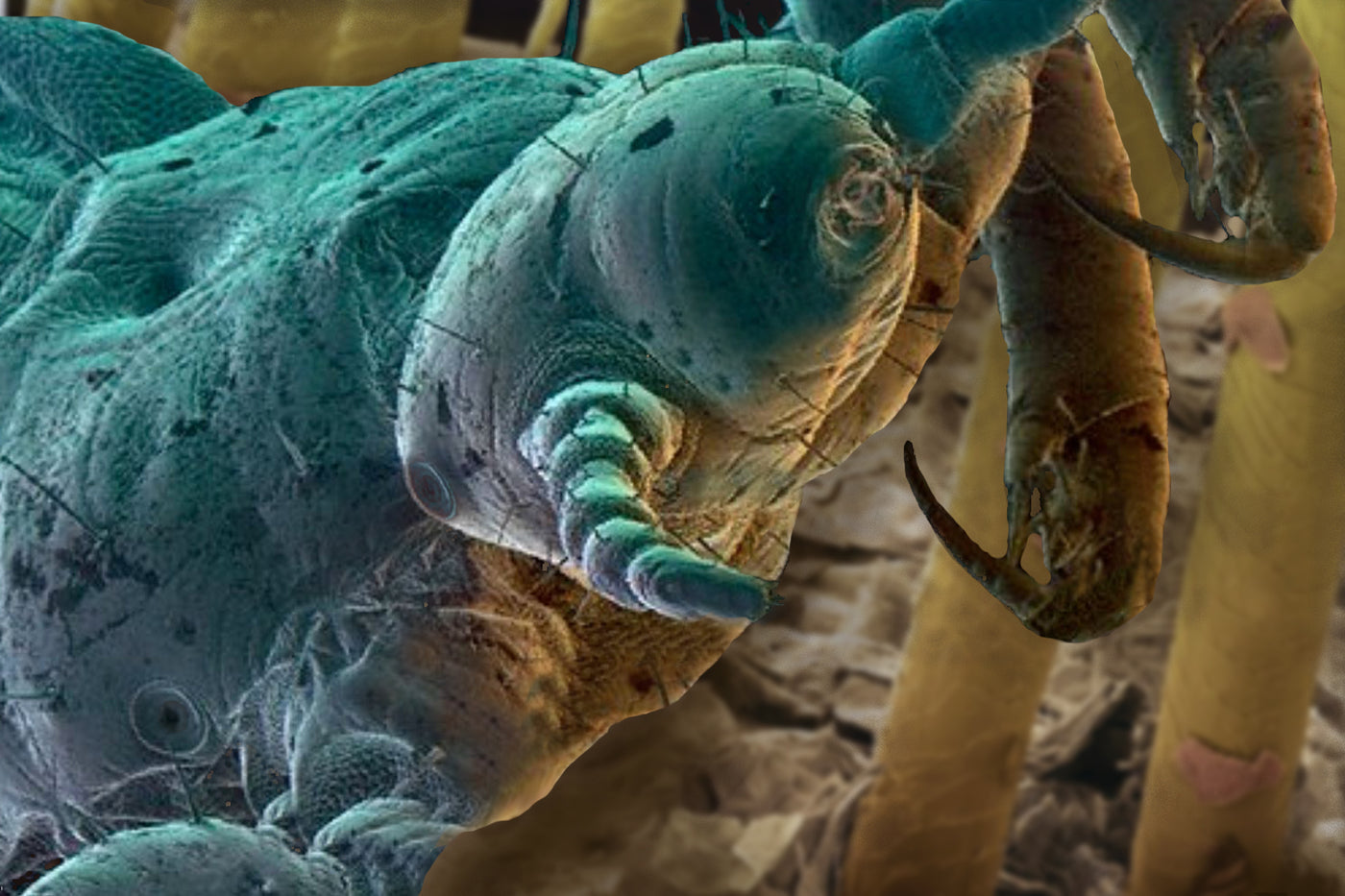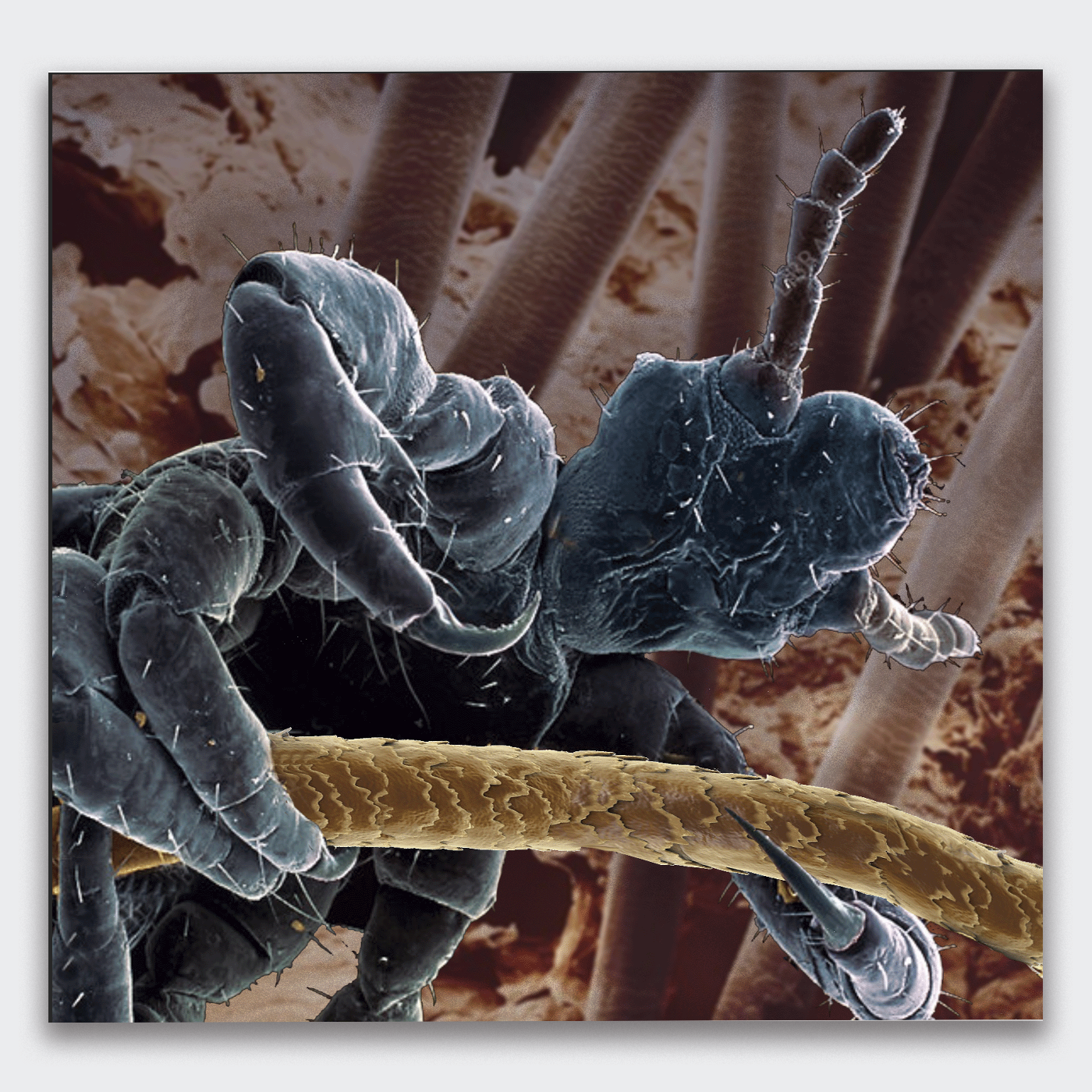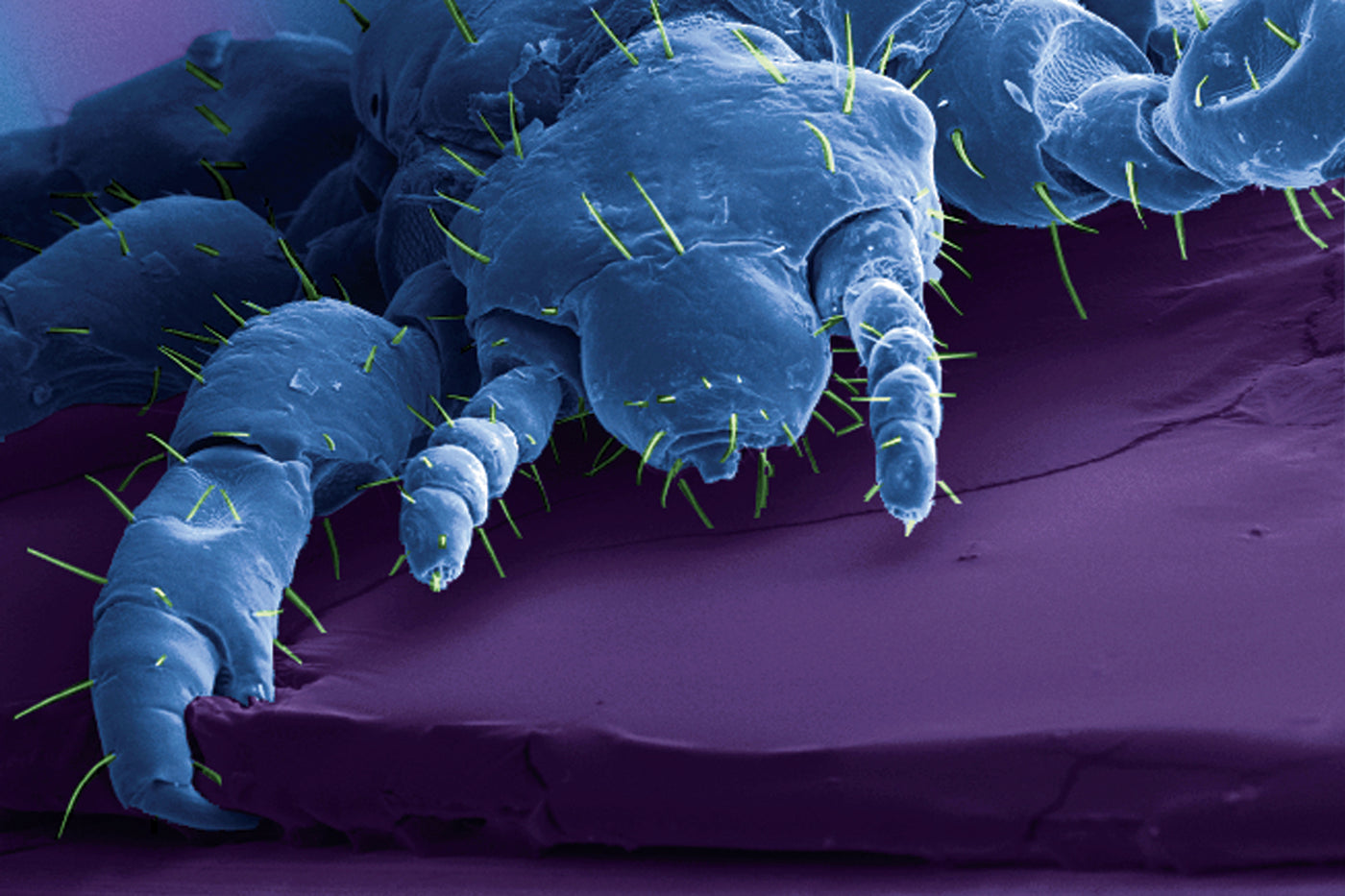Blind Lice

Acute sense of smell
Headlice are basically blind
In this view of the head of an adult head louse, note the lack of complex eye structure accompanied by large antennae with five segments and special Sense Organs on their tips.

HOW Do LICE FIND THEIR NEXT HOST
Highly sensitive antennae.
The eye is obvious in these images as a small dome on the side of the head.
The eyes are simple in structure, not compound eyes like in mosquitoes and flies. No scientific work has been done on the sight of head lice, but it is assumed that they can perceive light and dark.
It is obvious from these images that head lice do not see their next host's head, yet they move from host to host with absolute intention and accuracy.
Given the dense nature of a human head of hair, complex eyes are not very useful in the daily lives of head lice. The ability to see through a complex maze of hairs would be limited to the same ability we would have to see through a thick forest.
They rely primarily on their other senses of smell and touch to find suitable hosts. This has led to the development of the enlarged and highly sensitive antennae.

Humidy Sensors
Head Lice don't have ears
The tuft organs occur on the terminal segment and second last segment of each antenna in adult lice. Juvenile lice have one tuft organ on the terminal segment.
Head lice used tuft organs to detect relative humidity. When the tuft organs are blocked the lice are unable to detect and move to their preferred relative humidity of 75%.
Pore Organs are seen as depressed circular structures in this image. The circle is formed of radially arranged slits. The function of the pore organ is unknown. It was only detected when scanning electron microscopy was used to examine head lice.¹
We hypothesise that the structure and location of the Pore Organ serves to register vibration, in much the same way as the ear. Close examination of the head of a louse fails to reveal any other type of structure which could be interpreted as an ear.














